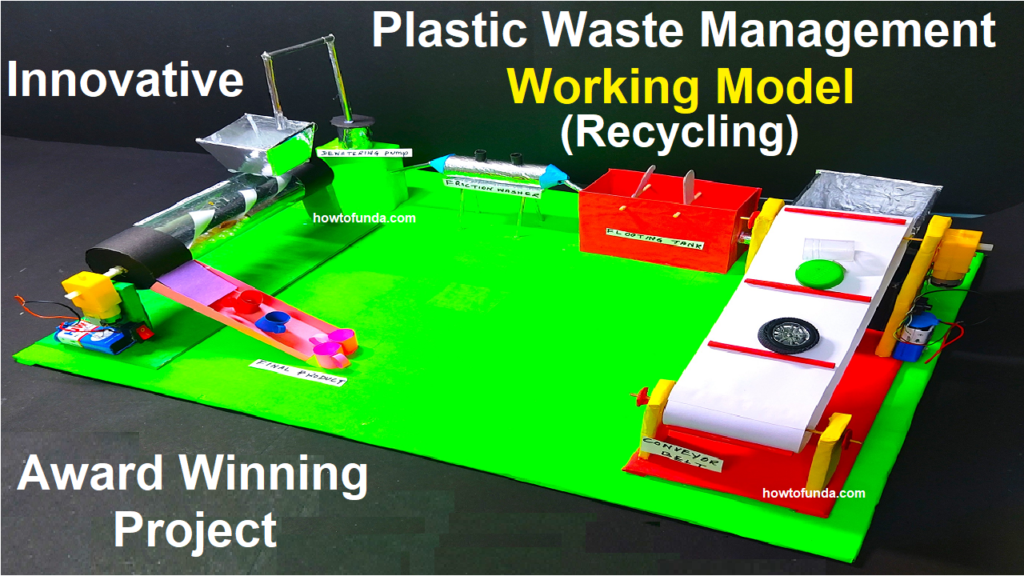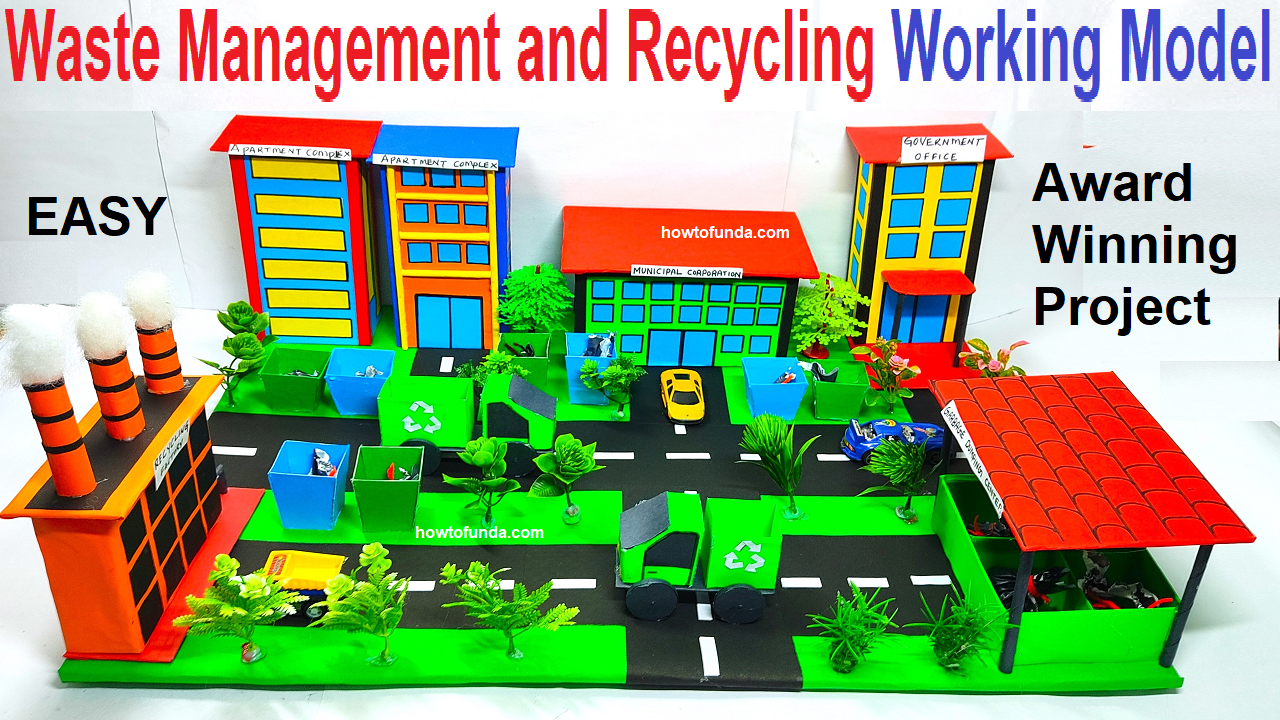Introduction
Waste management is the process of handling waste from its inception to its final disposal. This involves collecting, transporting, processing, recycling, and disposing of waste materials.

Effective waste management is crucial for maintaining a clean and healthy environment, reducing pollution, conserving resources, and promoting sustainable development.
This project will delve into the importance of waste management, various methods employed, challenges faced, and the role of individuals and communities in ensuring proper waste management practices.
1. Importance of Waste Management
1.1. Environmental Protection
Improper waste disposal can lead to significant environmental problems, including pollution of air, water, and soil. By managing waste effectively, we can minimize the release of harmful substances and protect natural ecosystems.
1.2. Health and Safety
Unmanaged waste can attract pests and become a breeding ground for diseases. Proper waste management reduces health risks and ensures a safer living environment for communities.
1.3. Resource Conservation
Recycling and reusing materials help conserve natural resources, reduce the demand for raw materials, and decrease energy consumption.
1.4. Economic Benefits
Efficient waste management can create jobs, reduce the costs associated with waste disposal, and generate revenue through recycling and the sale of recovered materials.
1.5. Aesthetic Improvement
Proper waste management keeps public spaces clean and attractive, improving the quality of life in communities and making them more pleasant places to live and visit.
2. Types of Waste
2.1. Municipal Solid Waste (MSW)
MSW includes household waste, commercial waste, and institutional waste. It comprises everyday items like food scraps, paper, plastics, glass, and metals.
2.2. Hazardous Waste
Hazardous waste contains substances that are dangerous or potentially harmful to human health and the environment. This includes chemicals, batteries, paints, and medical waste.
2.3. Industrial Waste
Generated by manufacturing and industrial processes, this type of waste can include chemicals, scraps, and by-products. Proper disposal is critical to prevent environmental contamination.
2.4. Agricultural Waste
Waste from farming activities includes crop residues, manure, and pesticides. Proper management is essential to avoid soil and water pollution.
2.5. Electronic Waste (E-waste)
E-waste comprises discarded electronic devices like computers, smartphones, and televisions. These items often contain hazardous materials and require special handling and recycling.
3. Methods of Waste Management
3.1. Waste Reduction
The most effective way to manage waste is to reduce the amount generated. This can be achieved through:
- Reducing Consumption: Encouraging people to buy only what they need.
- Designing for Durability: Creating products that last longer and can be easily repaired.
- Efficient Use of Resources: Optimizing processes to use fewer materials and generate less waste.
3.2. Reuse
Before throwing items away, consider whether they can be reused. This extends the life of products and reduces the need for new materials. Examples include using glass jars for storage and donating old clothes and toys.
3.3. Recycling
Recycling involves converting waste materials into new products. Commonly recycled materials include paper, cardboard, plastics, glass, and metals. Recycling reduces the need for raw materials, saves energy, and decreases pollution.
3.4. Composting
Composting is a natural process that turns organic waste, like food scraps and yard waste, into valuable compost. This nutrient-rich soil amendment can be used to improve garden soil.
3.5. Waste-to-Energy
This method involves converting non-recyclable waste materials into usable heat, electricity, or fuel through combustion. While it reduces the volume of waste, it must be carefully managed to control emissions and pollutants.
3.6. Landfilling
Landfills are engineered sites designed to safely dispose of waste. Modern landfills are equipped with liners and leachate collection systems to prevent environmental contamination. However, landfills have limited space and can produce greenhouse gases like methane.
3.7. Incineration
Incineration involves burning waste at high temperatures to reduce its volume and produce energy. It is effective for disposing of hazardous and medical waste but can produce harmful emissions if not properly managed.
4. Challenges in Waste Management

4.1. Increasing Waste Generation
With growing populations and rising consumption, the amount of waste generated is increasing, making effective waste management more challenging.
4.2. Limited Resources
Many regions face limited financial and technical resources for waste management infrastructure and operations.
4.3. Public Awareness and Participation
Effective waste management requires active participation from the public. Raising awareness about proper waste disposal and encouraging recycling and reduction behaviors is crucial.
4.4. E-waste Management
The rapid pace of technological advancement leads to a high turnover of electronic devices, creating a significant e-waste management challenge. Proper recycling and disposal are necessary to prevent environmental contamination.
4.5. Hazardous Waste
Handling and disposing of hazardous waste safely is complex and requires specialized facilities and regulations to protect human health and the environment.
5. Role of Individuals and Communities

5.1. Reducing Waste
Individuals can reduce waste by making conscious choices, such as buying products with minimal packaging, choosing reusable items, and avoiding single-use plastics.
5.2. Recycling
Participating in local recycling programs and properly sorting recyclables can significantly reduce the amount of waste sent to landfills.
5.3. Composting
Setting up a home composting system for organic waste can reduce the volume of household waste and provide valuable compost for gardening.
5.4. Supporting Policies
Communities can advocate for and support policies that promote sustainable waste management practices, such as bans on single-use plastics and incentives for recycling.
5.5. Education and Outreach
Educating others about the importance of waste management and how to practice it effectively can lead to more widespread adoption of sustainable behaviors.
6. Case Studies of Successful Waste Management
6.1. San Francisco, USA
San Francisco has implemented comprehensive waste management policies aimed at achieving zero waste by 2030. The city has a robust recycling and composting program and has banned single-use plastics and non-compostable food packaging.
6.2. Kamikatsu, Japan
Kamikatsu, a small town in Japan, has become a model for waste management by adopting a zero-waste policy. Residents separate their waste into 45 categories for recycling, reuse, and composting, significantly reducing landfill waste.
6.3. Sweden
Sweden is a global leader in waste-to-energy technology, converting nearly half of its waste into energy. The country also has high recycling rates and imports waste from other countries to fuel its waste-to-energy plants.
6.4. Kerala, India
Kerala has implemented successful decentralized waste management systems, encouraging households to segregate waste at the source and promoting community-based composting and recycling initiatives.
7. Innovations in Waste Management
7.1. Smart Waste Bins
Smart waste bins equipped with sensors can monitor waste levels and optimize collection routes, reducing operational costs and emissions.
7.2. Waste-to-Biofuel
Technologies that convert waste materials into biofuels offer a sustainable alternative to fossil fuels and reduce the volume of waste.
7.3. Circular Economy
The circular economy model promotes designing products for reuse, repair, and recycling, reducing waste and conserving resources. Companies like IKEA and Patagonia are adopting circular economy principles.
7.4. Plastic-to-Fuel Conversion
Innovative technologies can convert plastic waste into fuel, providing an alternative use for non-recyclable plastics and reducing environmental pollution.
Conclusion
Waste management is an essential aspect of sustainable living, requiring the collective efforts of individuals, communities, and governments.
By understanding the importance of waste management, adopting effective practices, and embracing innovative solutions, we can protect the environment, conserve resources, and create a healthier, cleaner world for future generations.
Through education and active participation, school students can play a crucial role in promoting and implementing effective waste management practices in their communities.

